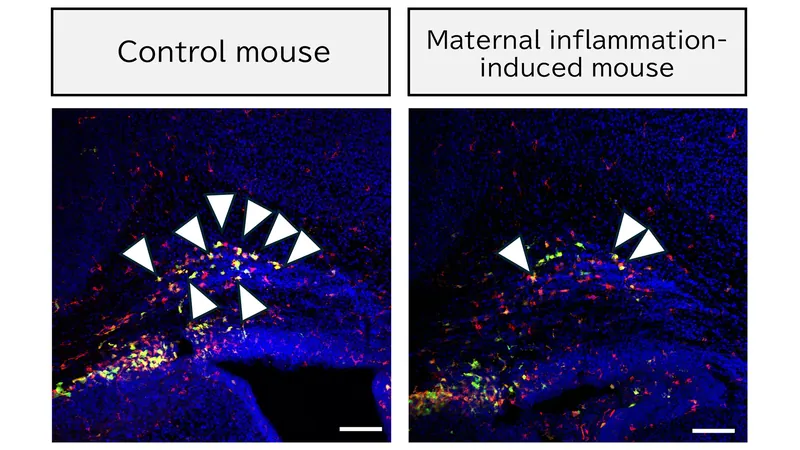
Breakthrough Blood Test Revolutionizes Early Alzheimer’s Detection for Asian Populations
2025-03-26
Author: John Tan
Introduction
Researchers in Singapore have made a groundbreaking discovery that could significantly impact the early detection of Alzheimer’s disease (AD) in Asian populations. A recent study published in *Alzheimer’s & Dementia* has confirmed the accuracy of the plasma p-tau217 blood test as a biomarker for spotting abnormal brain beta-amyloid (Aβ) levels, a critical hallmark of Alzheimer’s pathology.
Research Team and Focus
Led by Dr. Mitchell Lai from the National University of Singapore (NUS Medicine), this pivotal research involved collaborators from esteemed institutions, including the National University Health System and University College London. What sets this study apart is its focus on the Asian demographic, particularly important as cerebrovascular disease (CeVD) is a growing concern in these populations, often complicating the diagnosis of cognitive disorders.
Key Findings
Key findings show that heightened levels of plasma p-tau217 are closely associated with accelerated cognitive decline. This positions the test not just as a diagnostic tool, but also as a reliable predictor of how quickly Alzheimer’s might progress, allowing for proactive intervention strategies.
Advantages of the Plasma p-tau217 Test
In a landscape dominated by costly and invasive procedures like PET scans, the plasma p-tau217 test emerges as a non-invasive, budget-friendly alternative that could seamlessly integrate into routine medical practice. This accessibility could transform Alzheimer’s screening, making it available to a broader range of individuals at risk.
Tailored Risk Assessment
Healthcare professionals could leverage p-tau217 levels to classify individuals into varying risk categories for Aβ pathology—low, intermediate, and high. This tailored approach promises more personalized care, enabling earlier therapeutic interventions for those identified as high-risk.
Expert Insights
Professor Christopher Chen, Director of the Memory, Ageing and Cognition Centre at NUHS, praised the implications of these findings: "This evidence suggests that plasma p-tau217 could revolutionize early detection of Alzheimer’s in Asian populations, where the burden of CeVD is significant. It’s a substantial step toward a more inclusive method for diagnosing and managing AD."
Dr. Joyce Chong, the study’s lead author, emphasized the test's role as a supplementary tool rather than a replacement for traditional diagnostic methods like PET scans, stating, "By introducing cost-effective and minimally invasive screening options, we can reduce reliance on confirmatory tests while enhancing risk evaluation efficiency."
Future Directions
The research team plans to continue their efforts, with ambitions to broaden the study to include an extended follow-up and assess additional biomarkers. Dr. Lai indicated the vital need for a comprehensive understanding of dementia as a multifaceted condition, particularly in populations disproportionately affected by CeVD.
Conclusion
This landmark study opens new avenues for managing Alzheimer's disease, offering a beacon of hope for earlier, more effective, and accessible diagnoses, particularly in regions where cerebrovascular conditions pose an added challenge to cognitive health. The future of Alzheimer’s detection is not just a matter of medical advancements, but one of accessibility and tailored healthcare strategies.





 Brasil (PT)
Brasil (PT)
 Canada (EN)
Canada (EN)
 Chile (ES)
Chile (ES)
 Česko (CS)
Česko (CS)
 대한민국 (KO)
대한민국 (KO)
 España (ES)
España (ES)
 France (FR)
France (FR)
 Hong Kong (EN)
Hong Kong (EN)
 Italia (IT)
Italia (IT)
 日本 (JA)
日本 (JA)
 Magyarország (HU)
Magyarország (HU)
 Norge (NO)
Norge (NO)
 Polska (PL)
Polska (PL)
 Schweiz (DE)
Schweiz (DE)
 Singapore (EN)
Singapore (EN)
 Sverige (SV)
Sverige (SV)
 Suomi (FI)
Suomi (FI)
 Türkiye (TR)
Türkiye (TR)
 الإمارات العربية المتحدة (AR)
الإمارات العربية المتحدة (AR)